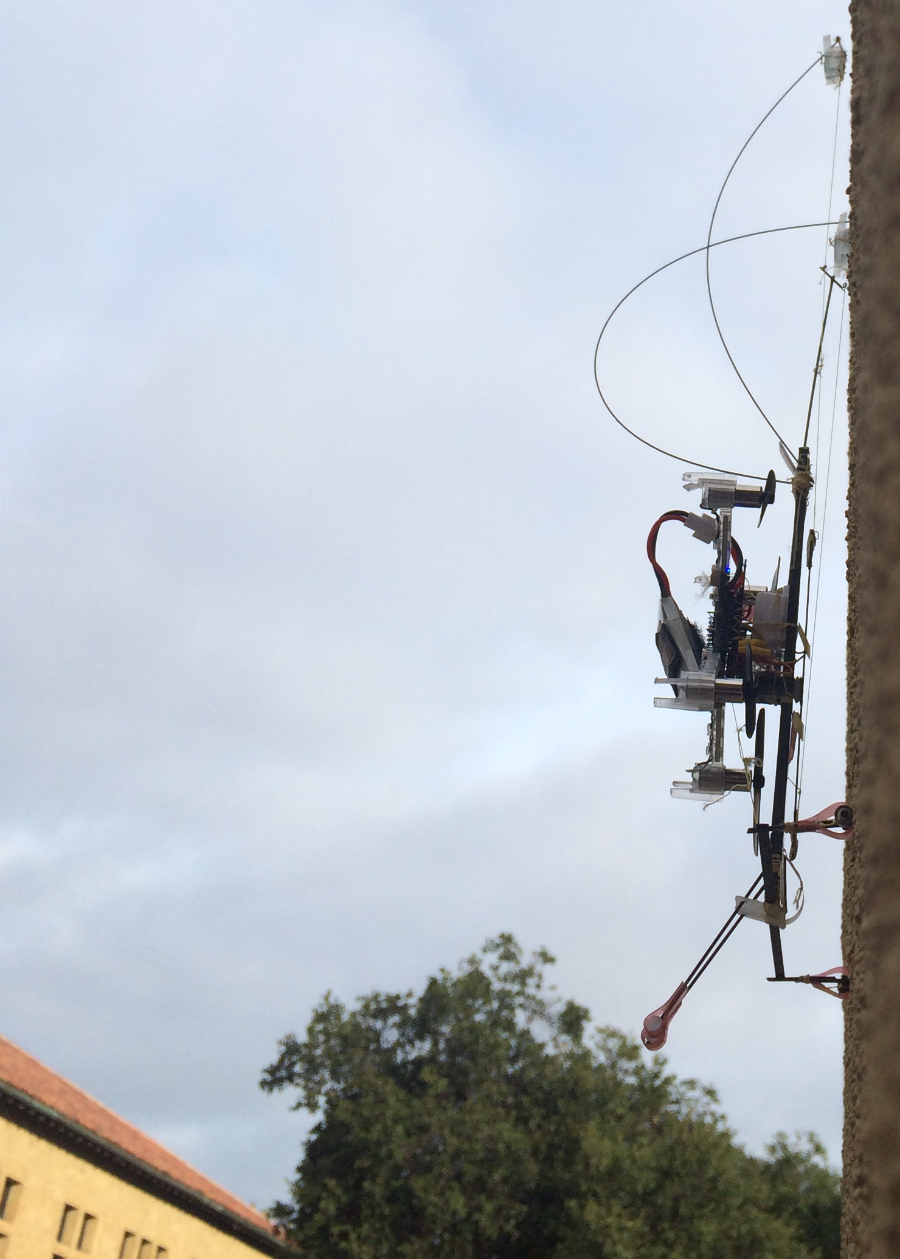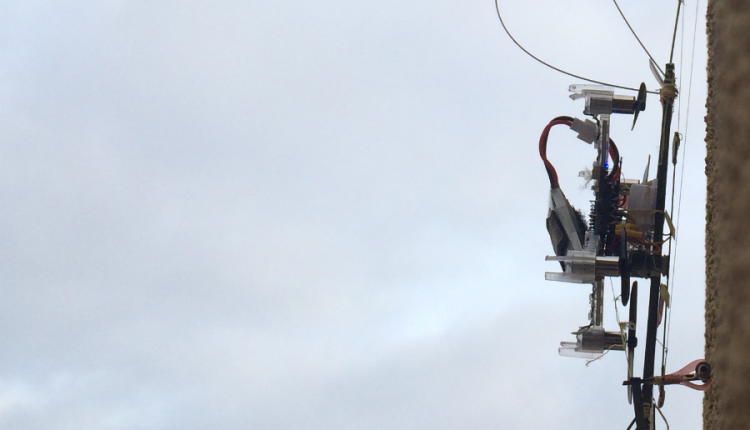What’s cooler than a piloting drones? How about piloting drones that can stick to walls. Engineers from Stanford University’s Biomimetics and Dexterous Manipulation Lab recently developed an opposed-grip strategy with micro-spines that enables quadcopters to perch on rough outdoor surfaces.
The development builds on the team’s previous work: SCAMP, the Stanford Climbing and Aerial Maneuvering Platform, which was unveiled just a couple of months back.

SCAMP combines drone capabilities with that of Spiderman superpowers and is equipped with the ability to climb. The robot is the first of its kind that can not only fly, but passively perch, climb, and take-off. It operates outdoors on rough surfaces like concrete and stucco, using its on-board sensing and computation technology.
Some of SCAMP’s features include hybrid capabilities “like automatic recovery from climbing failure through timely application of rotor thrust.”
How does SCAMP perch? To get a drone to perch, the engineers programmed the bot to fly tail-first into the wall. When it detects the acceleration spike on impact, it turns its rotors up to maximum capability and uses its tail as a pivot to attach to the wall aerodynamically while its feet find ideal places to grip.
How does SCAMP climb? Once attached to the wall, the robot alternates the loads between its feet, dragging the unloaded foot along the wall’s surface until it catches on to something. The tension in the engaged foot is removed, causing it to release.
When SCAMP is done resting on the wall and wants to start flying again, it rotates its servos to a special position and engages its “takeoff spine”. When the load is transferred from the engaged foot to this spine, it spins SCAMP away from the surface, tips the bot back, starts up the rotors and SCAMP lifts-off into flight.
This is the most recent video published by the lab showing the technology in action.


Comments are closed, but trackbacks and pingbacks are open.